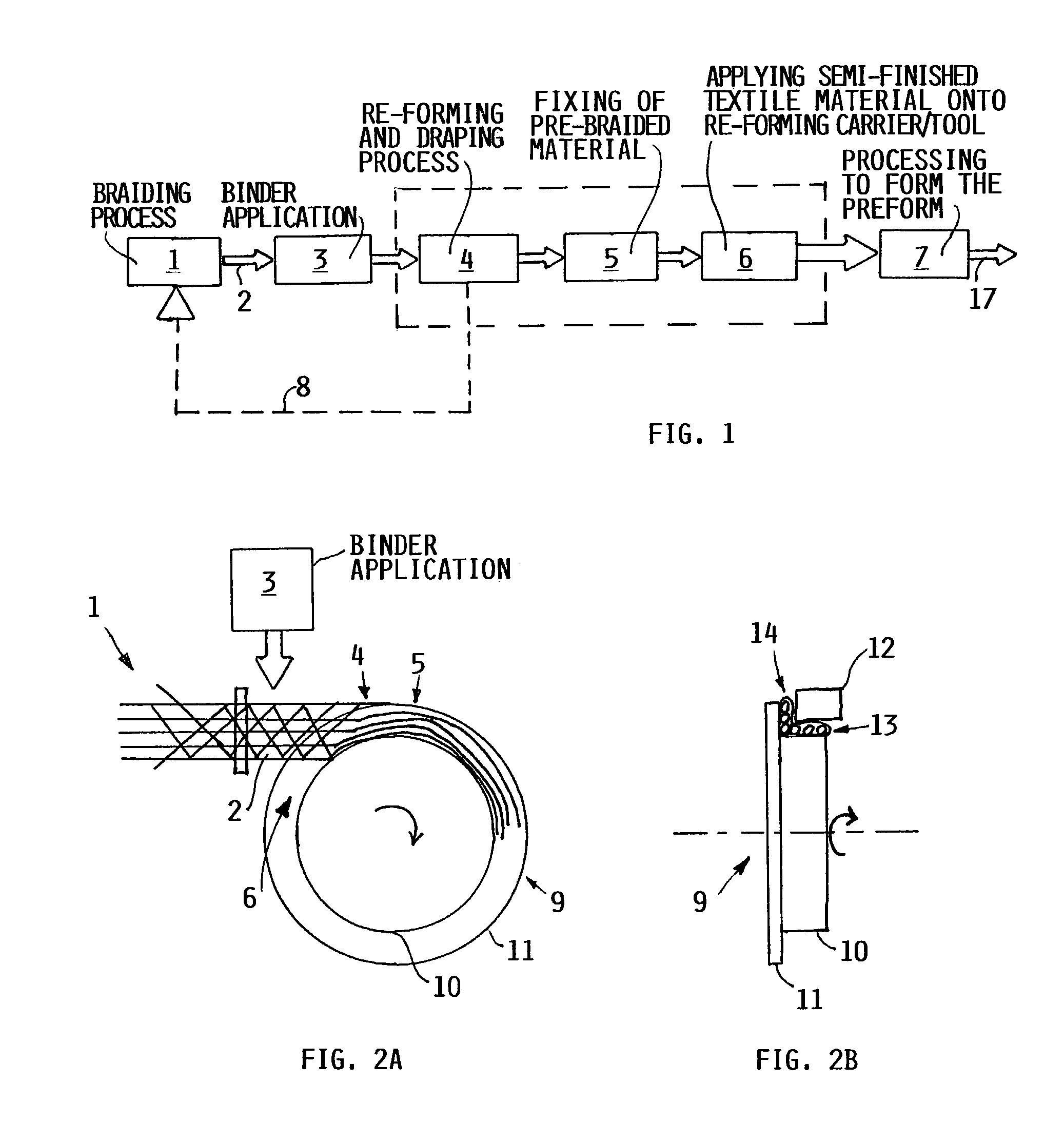Method of producing textile preforms for fiber reinforced composite products from textile semi-finished articles
a technology of fiber reinforced composite products and textile semi-finished articles, which is applied in the direction of ceramic layered products, other domestic articles, braids, etc., can solve the problems of limited geometries of semi-finished articles, unable to achieve certain component geometries using semi-finished articles, and limited geometry and dimensions of the core, so as to reduce damage and undulation of fibers and reduce viscosity
- Summary
- Abstract
- Description
- Claims
- Application Information
AI Technical Summary
Benefits of technology
Problems solved by technology
Method used
Image
Examples
Embodiment Construction
[0023]FIG. 1 is a schematic block diagram for explaining the general concept of the inventive method of producing a textile preform from a textile semi-finished material or article, in connection with a particular example embodiment using a braiding process to form the semi-finished material or article. In this example, the method includes a braiding process 1 for producing a loose and drapable pre-braided material 2, the optional application 3 of a binder, for example in the form of a thermoplastic powder, onto the pre-braided material 2, a reforming or draping process 4 applied to the pre-braided material 2, a fixing step 5 of fixing the fibers of the pre-braided material 2 to form a textile semi-finished article, an application step 6 of applying the textile semi-finished article onto a carrier (e.g. 9, see FIGS. 2A and 2B), and a subsequent processing step 7 of further treating or processing the semi-finished article to form thereof a textile preform, which is provided for the s...
PUM
| Property | Measurement | Unit |
|---|---|---|
| temperature | aaaaa | aaaaa |
| pressure | aaaaa | aaaaa |
| lengths | aaaaa | aaaaa |
Abstract
Description
Claims
Application Information
 Login to View More
Login to View More - R&D
- Intellectual Property
- Life Sciences
- Materials
- Tech Scout
- Unparalleled Data Quality
- Higher Quality Content
- 60% Fewer Hallucinations
Browse by: Latest US Patents, China's latest patents, Technical Efficacy Thesaurus, Application Domain, Technology Topic, Popular Technical Reports.
© 2025 PatSnap. All rights reserved.Legal|Privacy policy|Modern Slavery Act Transparency Statement|Sitemap|About US| Contact US: help@patsnap.com


